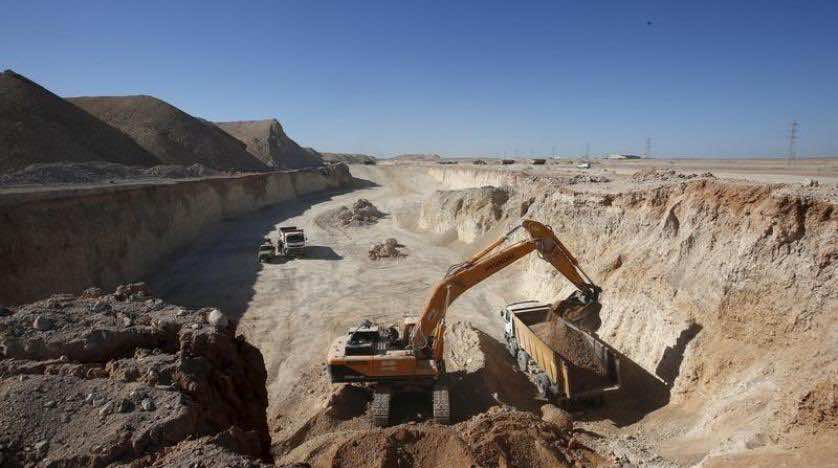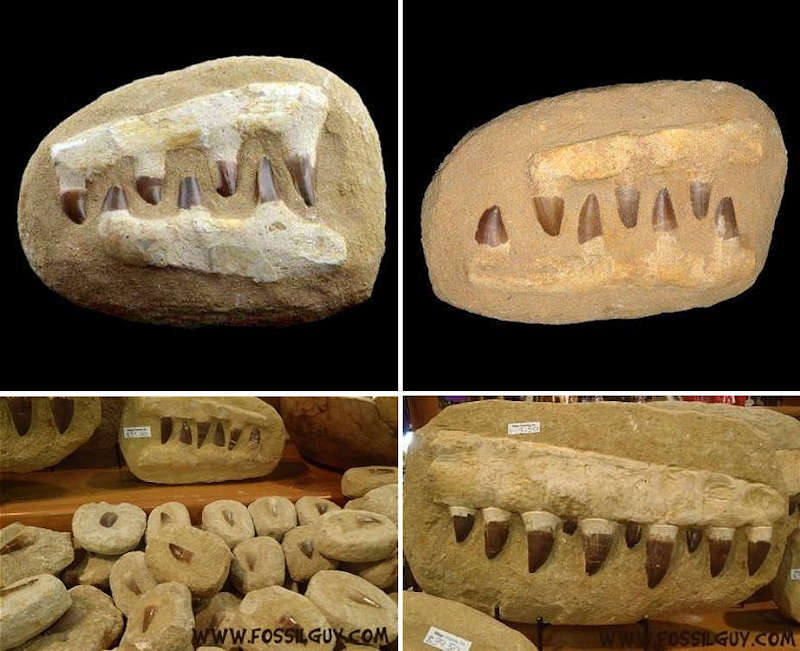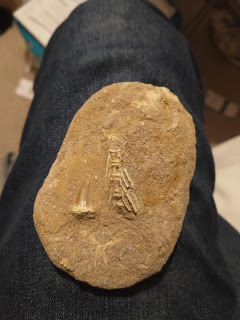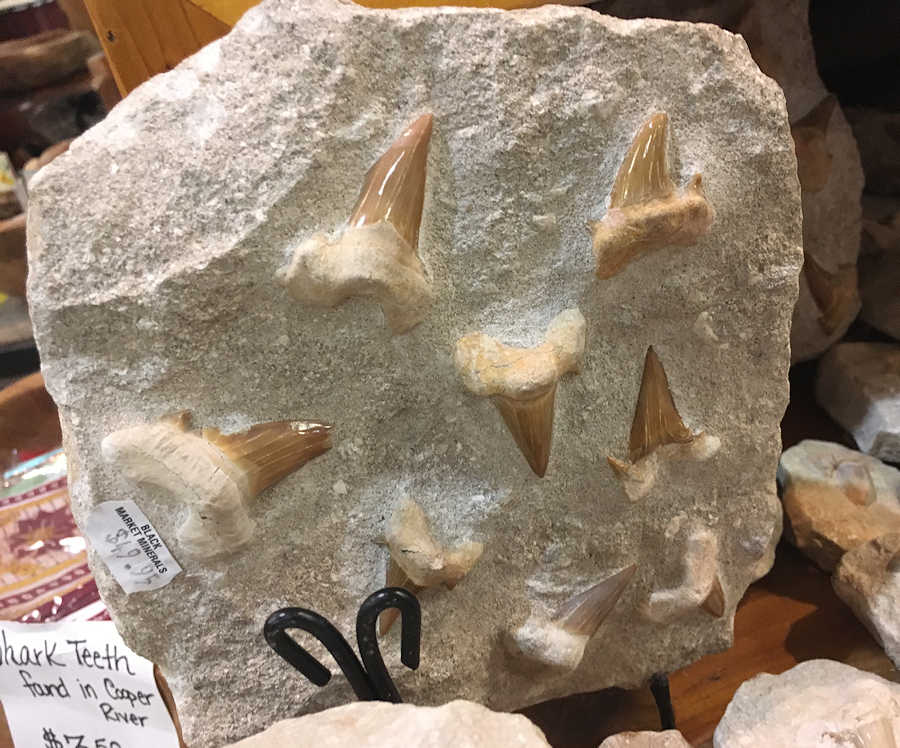The fossils of Morocco | Mosasaurus beaugei
Finally, another post! Life has been quite difficult recently, and I've had a lot of appointments in the hospital, and, combined with a much higher workload, I haven't had too much free time. Anyways, enough of that!
A couple of weeks ago, I acquired a gorgeous fish and mosasaur association, from a seller on the web. It hails from the Cretaceous of Khouribga, Morocco, unprepped, just split out of the rock!
Here's the fossil in question! Ignore the mess in the background...
Can you believe this thing is 70.6 - 66 million years old!? Look at the sheer awesome preservation on that fish spine; absolutely stunning!
So, story time. The tooth is from the species "Mosasaurus beaugei", a pretty large mosasaurine.
 |
| Pictures from www.prehistoric-wildlife.com |
Here's a nice image (or, 2 images...) of the size of Mosasaurus (silhouette 16) against other mosasaurines, and a human. As you can see, that's... A pretty big beasty!
It came from the Ouled Abdoun Basin in Morocco, which is a HUGE sedimentary phosphate basin - so big that it holds nearly half of Morocco's phosphate reserves, which is over 26.8 billion tons of phosphate (24,312,551,032,000 kilograms). That's... A lot!
To be precise, but in an interesting metric, that's 50 humans worth of phosphate for each human on the planet, or 3,078 kilograms for each of us!
Anyways, geology cool and whatever, but we're here for the fossils. I, along with the entire palaeontology community, must say, the O. A. Basin is absolutely fascinating. Its deposits range in age from the late Cretaceous (100 million years), to the late Eocene epoch (48 million years). That alone is fascinating, but it's the sheer amount (and quality) of vertebrate fossils to be found here that makes it so special.
 |
| Image from www.moroccoworldnews.com |
Shown above is a typical phosphate quarry in Morocco. In 2017, a whopping $6.12 billion USD worth of minerals and precious metals were mined, making it one of the most important industries in the whole country.
Large phosphate deposits such as this form in seawater, particularly areas rich with animal corpses and nutrients. This, obviously, means that phosphate beds are usually choc-full of fossils. As the phosphatic rock is so greatly mined, tonnes of fossils come out as a by-product. Locals collect these unfortunately fragmented fossils (hence why few whole specimen come out), and sell them.
Too many fossils are fabricated, using a real tooth or bone and setting it into a fake jaw or matrix made out of dust, plaster and glue, such as these:
 |
| Both images from www.fossilguy.com |
The images above show the most common fake fossils from Morocco. The teeth (Otodus obliquus and Mosasaurus sp.) are real, but have been collected and set into the fake jaws and rock, to make them look more attractive and sell for more money.
This by itself would be okay, however these fossils aren't sold as "composite" (called composite as some of the fossil is real), they are sold as real, 100% natural fossils, making it fraudulent, and illegal. Still tourists buy these, unknowing that they are composite.
Anyways, enough about the facts, lets prep on!

Note: always take care with needles and acid, not only for protecting the specimen, but they also pose a hazard to human (and other animal) health!
Isaac, over and out...






